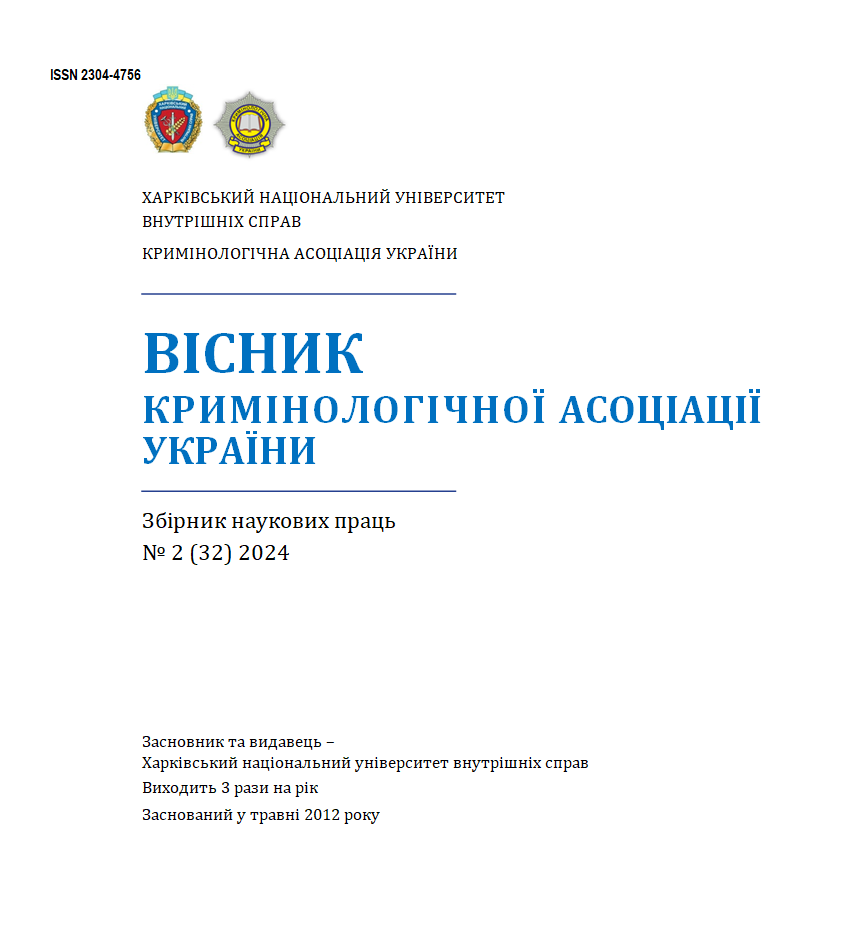POST-WAR TRANSIT IN UKRAINE: MATRIX OF CRIMINOGENIC RISKS OF TRANSITIONAL JUSTICE
DOI:
https://doi.org/10.32631/vca.2024.2.13%20Keywords:
criminal offense, aggression, hatred, criminality, crime prevention, war, martial law, prevention, determination, criminogenic risk, frontier, transitional justice, criminal responsibility, punishment, historical truth, victim, compensation, reformAbstract
The article is devoted to criminological modeling of the matrix of
criminogenic risks of transitional justice. The combination of pre-war, post-war
and post-war factors of social criminogenesis represents a complex structure of
social conditions and interactions, which can be imagined as a rhizomatic
formation, a rhizome. This formation is characterized by numerous nodes and
ligaments without a pronounced center of gravity. In contrast to rigid subordinate
ties, the rhizome is represented by a reordering of interactions and mutual
influences. An information model of the rhizomatic structure of criminogenic risks
of transitional justice was formed – a matrix of post-conflict criminogenic
potential. In its composition, five functional loci are identified and characterized –
specific types of activities (their direction, states, etc.) both within social
institutions and outside (above) them, which in various combinations,
interactions, mutual functional transitions are capable of acquiring criminogenic
significance in connection with and in the context of the implementation of
measures within the four basic areas of transitional justice.
Downloads
Downloads
Published
Issue
Section
License
Copyright (c) 2024 Ю.В. ОРЛОВ

This work is licensed under a Creative Commons Attribution 4.0 International License.

